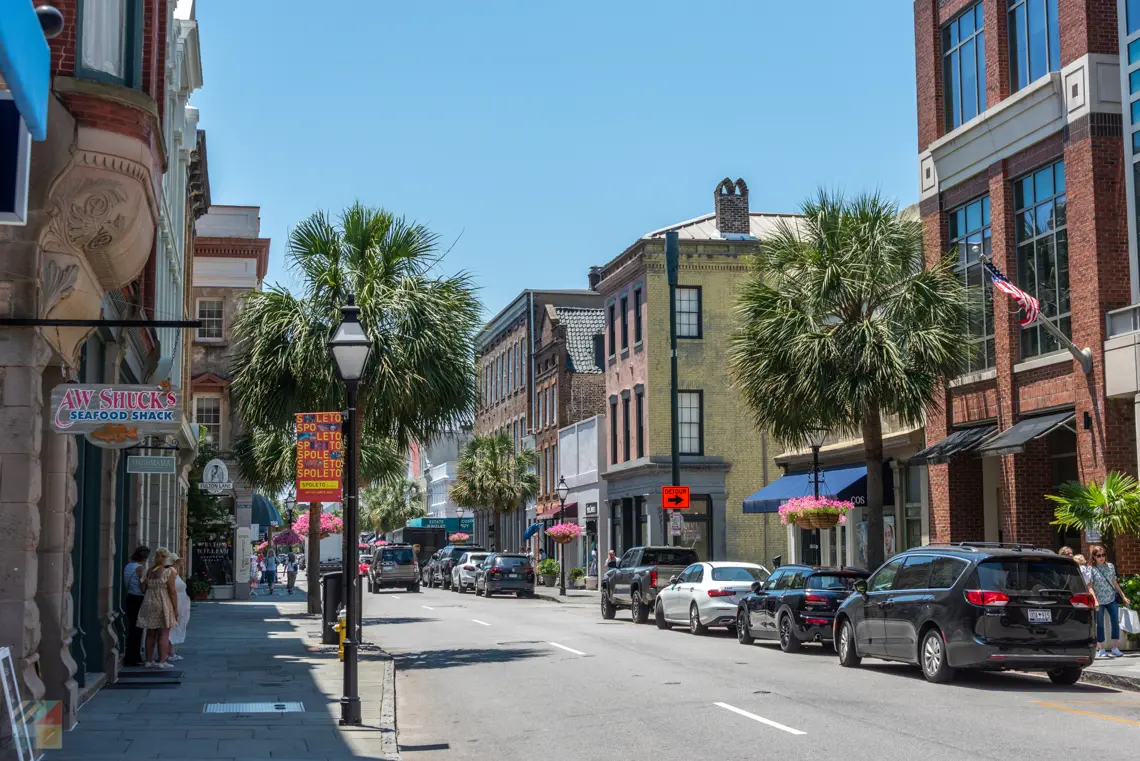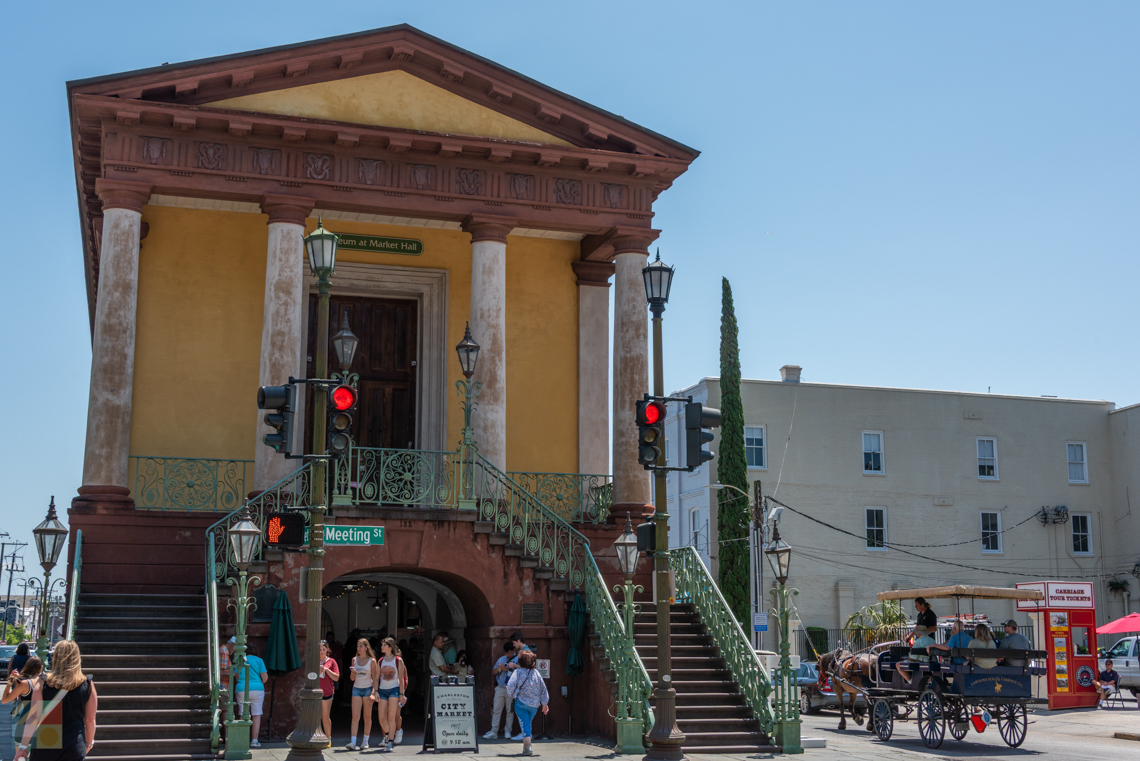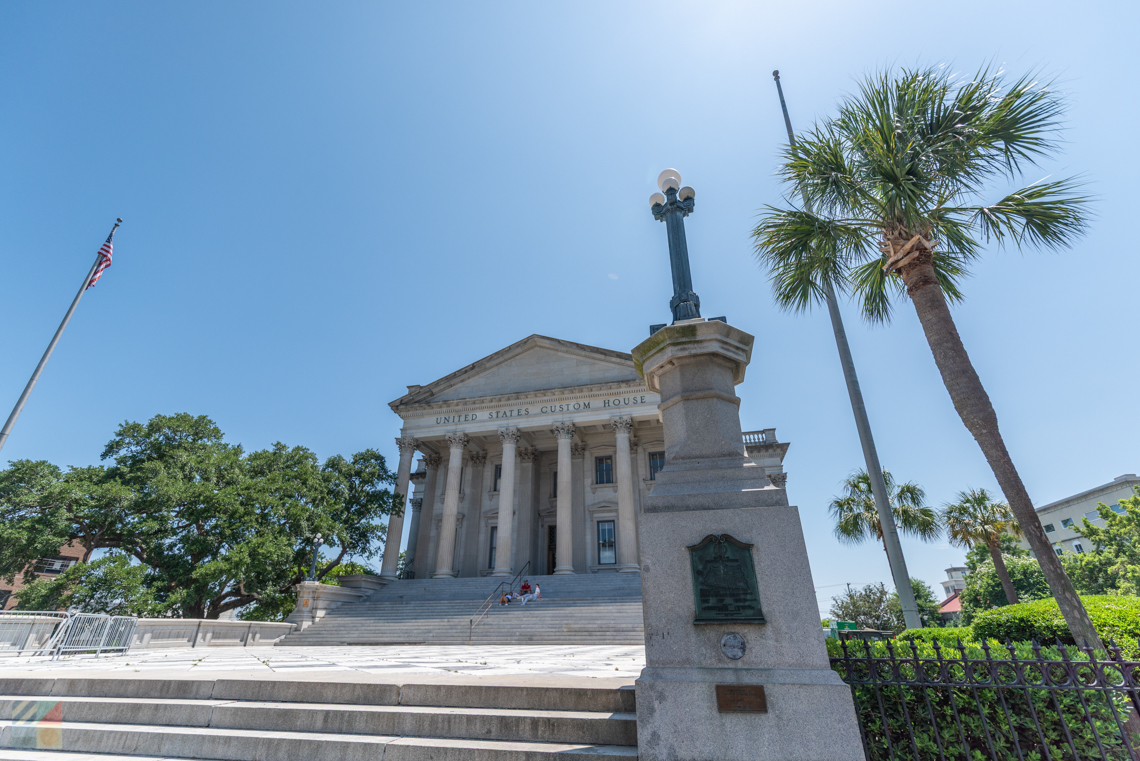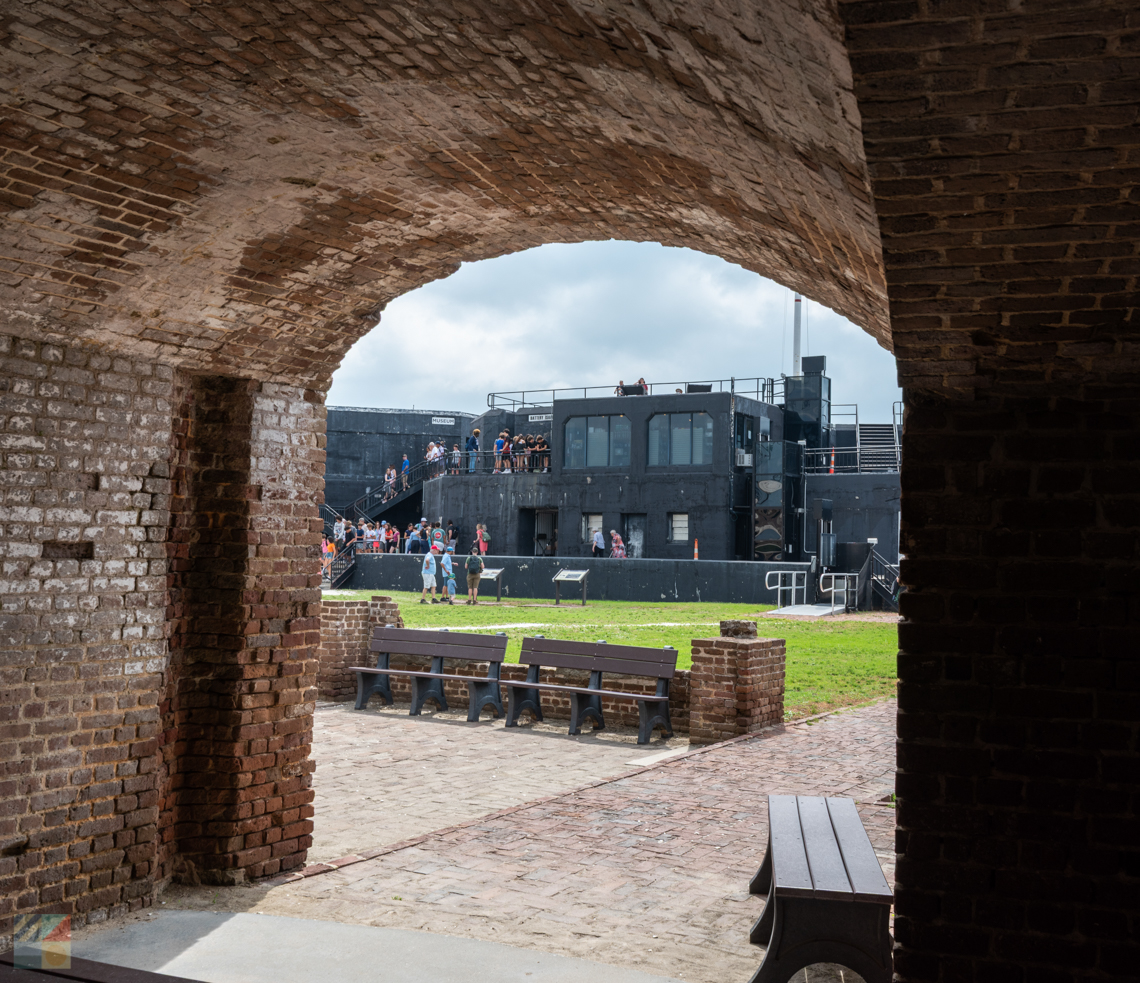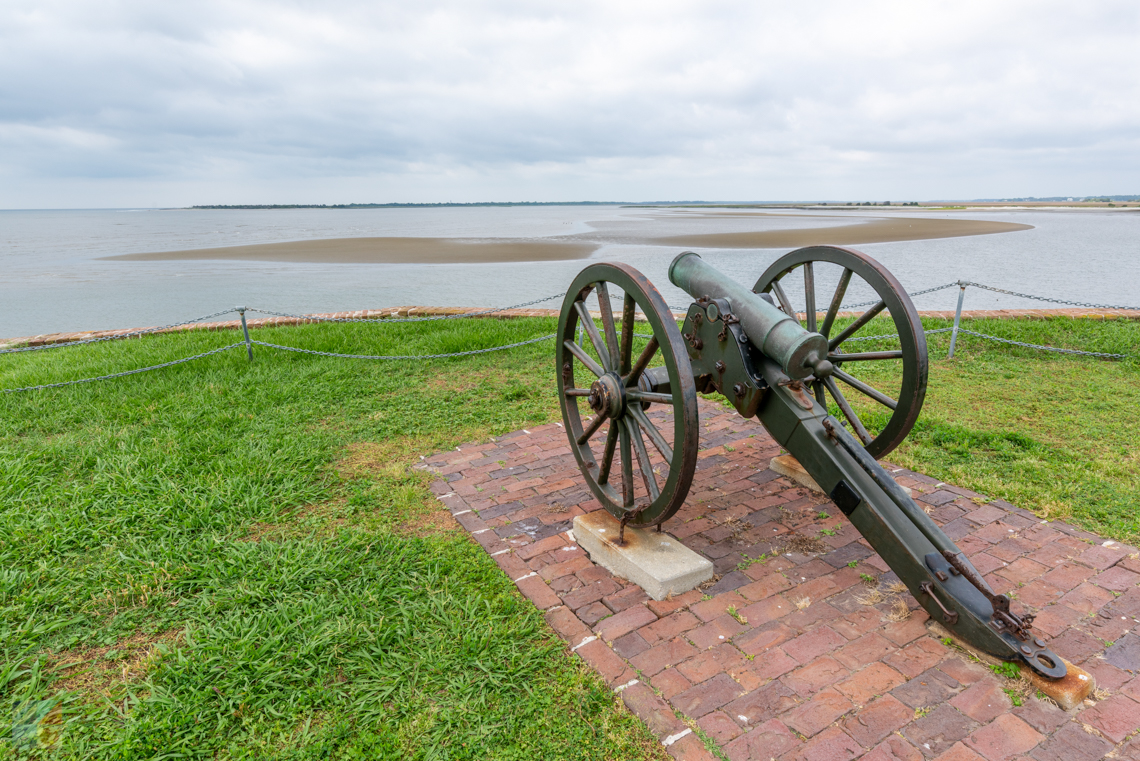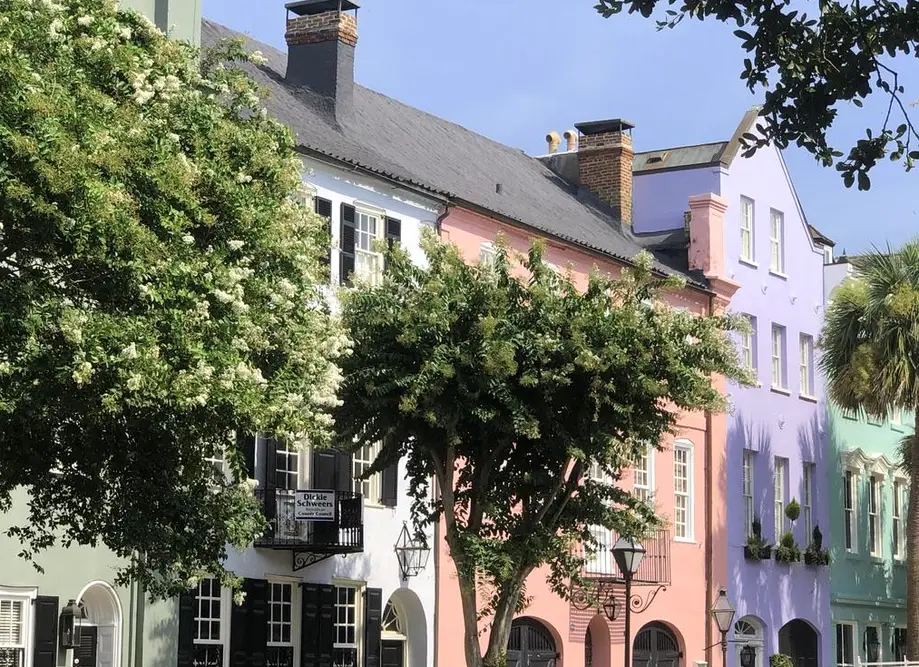Charleston County and the city of Charleston, its county seat, are the most historic locations in the state. English settlers arrived in the colony of Carolina in 1670 and established a town at Albemarle Point on the west bank of the Ashley River. The settlement, named Charles Town in honor of King Charles II of England, was subsequently moved a few miles away to a peninsula between the Ashley and Cooper rivers. Charles Town (renamed Charleston in 1783) was the political, social, and economic center of South Carolina throughout the colonial and ante-bellum periods, and it served as the state capital until 1790.
Charles Town District was formed in 1768, but portions were later split off to form Colleton (1800) and Berkeley (1882) counties. Present day Charleston County includes the old parishes of St. Philip, St. Michael, Christ Church, St. Andrew, St. John Colleton, and part of St. James Santee.
English and French Huguenot settlers and their African slaves built indigo, rice, and cotton plantations along the area's rivers and on its sea islands, while merchants of many nationalities made Charleston one of the busiest ports on the Atlantic. During the Revolutionary War the American forces defeated the attacking British fleet at Charleston in June 1776; a palmetto log fort (later named Fort Moultrie) on Sullivans Island withstood the British cannon balls, and the palmetto tree was subsequently given a prominent place on the South Carolina flag. At another Charleston fort, Fort Sumter, federal troops were fired on by Confederate forces in April 1861, signalling the start of the Civil War.
In 1785, the new state Legislature of South Carolina issued the "County Court Act" and established thirty-three "new counties" within the existing seven "overarching Districts." These "new counties" in the backcountry and upcountry did fairly well since many of the new inhabitants were from North Carolina, which had a very strong county system already in place and the new citizens of the upstate counties in South Carolina took advantage of their experience and knowledge. However, the Lowcountry citizens were not used to having another "layer" of bureaucracy added to their daily burdens and they seemed to be quite comfortable with the District Court system as established in 1768 as well as the Parish system in place since 1706.
Therefore, the "new counties" in the lowcountry Districts of Beaufort, Charleston, and Georgetown did not take root - there are several reasons that they did not survive. The state did not take immediate steps to commence building any new county courthouses or appoint local citizens to serve as justices or commissioners. And, the locals never took any initiative on their own to press for this new "county system" themselves. Therefore, all of the "new counties" that were created by the 1785 County Court Act in the Lowcountry were abolished in 1791, and the "old Districts" of Beaufort, Charleston, and Georgetown continued to be the governmental seats until 1800, when, finally, the old seven "overarching Districts" were abolished in favor of "new districts" - equivalent to "counties" nowadays - which continued until the new state Constitution after the US Civil War in 1868 adopted the term "county" instead of "district."
The 1785 County Court Act created six "subordinate" counties within the "overarching" Charleston District - Bartholomew County (totally new), Berkeley County (a new incarnation with new boundaries), Colleton County (a new incarnation with new boundaries), Charleston County (totally new), Marion County (totally new - and not to be confused with the later county along the Pee Dee River that was created n 1798), and Washington County (totally new). All six of these "new counties" did not take root with the local citizenship, who were apparently quite comfortable doing their governmental business in Charleston, and these six "new counties" were abolished in 1791. Some were again resurrected by the Legislature in 1800, but with totally new boundaries and descriptions just nine years later.
The Charleston County of 1785 was very small in size and essentially encompassed all of the city of Charleston and immediately surrounding areas. This "new county" was abolished in 1791, only to be resurrected in 1800 as the "new and improved" Charleston District (county) that included all of what is present-day Berkeley County, most of present-day Charleston County, and a very small fraction of Orangeburg County. This "version" of Charleston County remained until 1878, when the present incarnation of Berkeley County was established and carved out of Charleston County at that point in time. Dorchester County was carved out of Charleston County in 1897, leaving the current boundaries that continue to this day for Charleston County.
Charleston History Tours
Purchase a gift card for any monetary amount, and recipients can redeem for any of our offerings!
If it weren't for the telltale palmetto trees and notable landmark neighbors, like the historic Dock Street Theater, a visitor might mistake this church for an authentic French house of worship, tucked away in a European countryside of decades ago.
